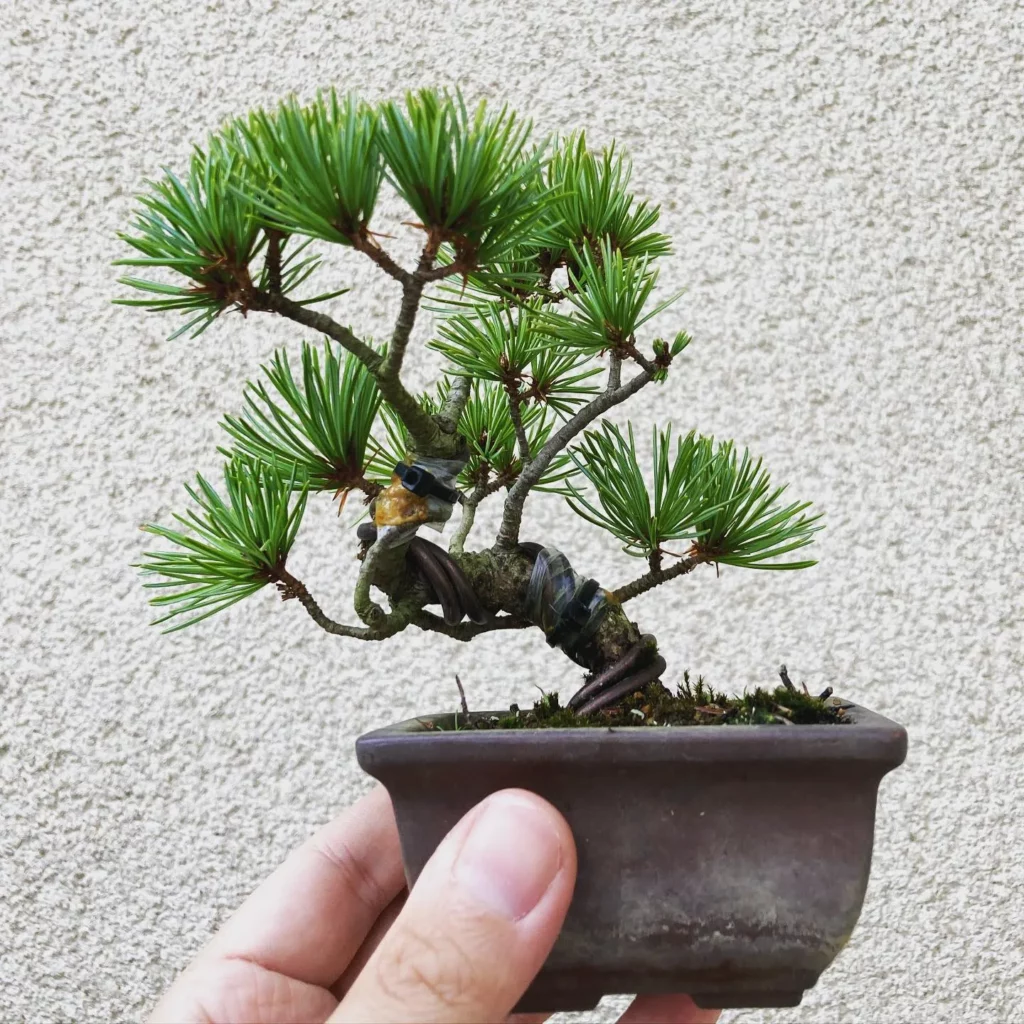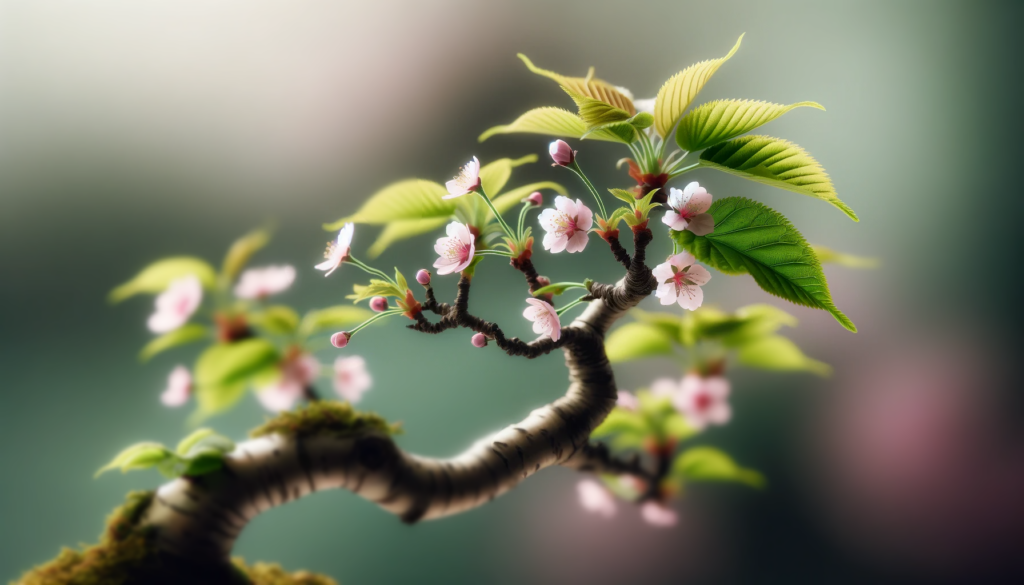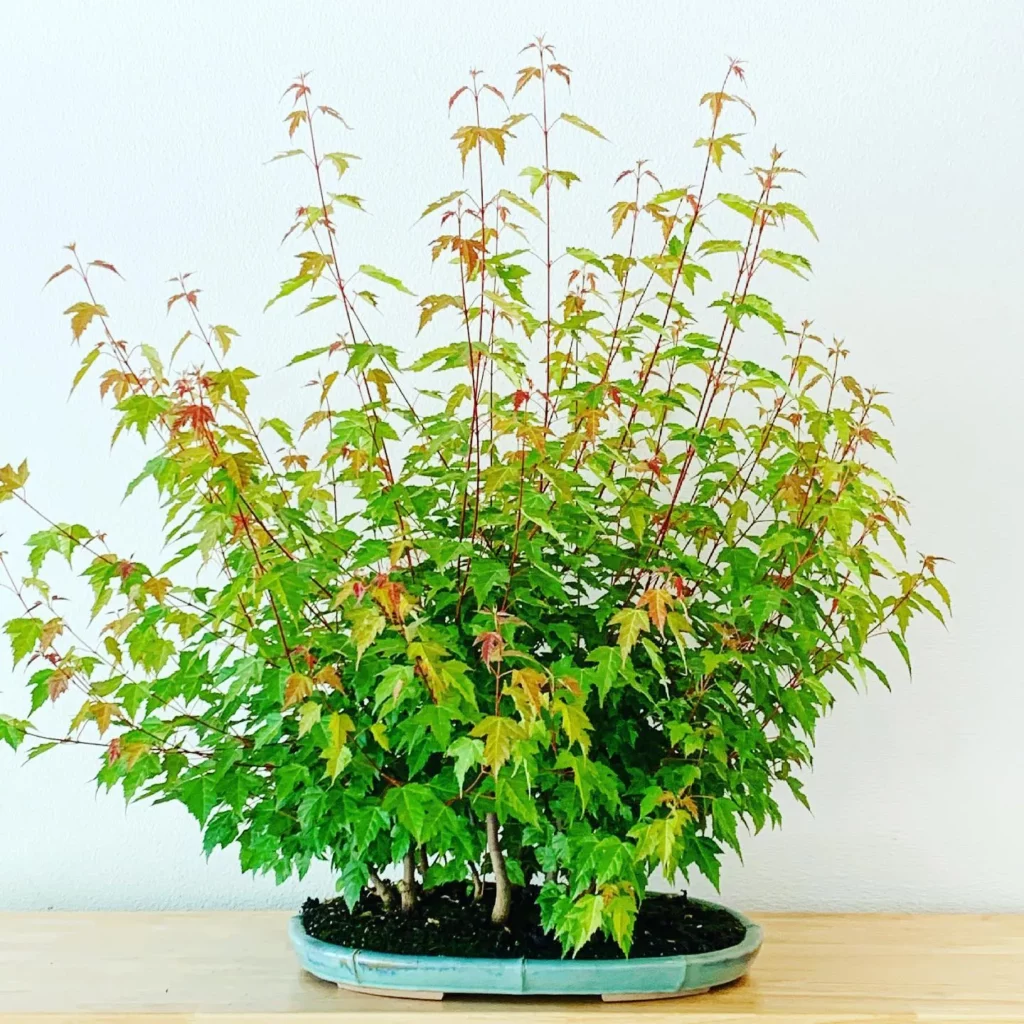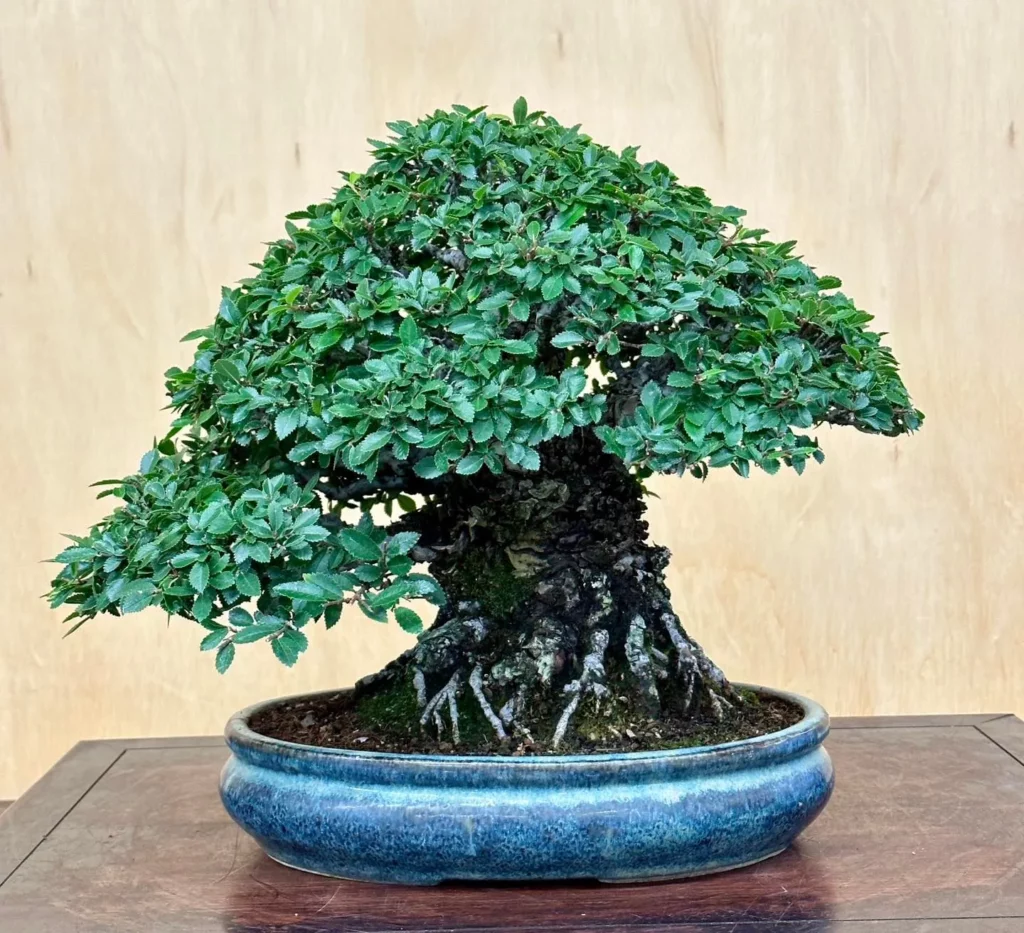Are you considering delving into the world of bonsai cultivation? Look no further than the Hornbeam Bonsai, scientifically known as Carpinus spp. This versatile and visually appealing tree is an excellent choice for beginners. In this comprehensive beginner’s guide, we will walk you through all the essential care requirements for growing and maintaining a healthy Hornbeam Bonsai tree.
Key Takeaways:
- The Hornbeam Bonsai, or Carpinus spp., is a popular choice for bonsai cultivation.
- It has distinct bark, vibrant foliage, and captivating fall colors.
Introduction to Hornbeam Bonsai



Welcome to the fascinating world of Hornbeam Bonsai! Whether you’re a beginner in the art of bonsai or an experienced enthusiast, this guide will introduce you to the beauty and unique characteristics of Hornbeam Bonsai.
Hornbeam Bonsai, specifically the Carpinus caroliniana species, is cherished for its striking bark, vibrant foliage, and captivating fall color. This slow-growing and resilient tree lends itself well to various bonsai styles, including forest or clump plantings, as well as formal and informal upright styles.
With its distinctive features and versatility, Hornbeam Bonsai is an excellent choice for bonsai enthusiasts who appreciate the art of cultivating and nurturing these miniature masterpieces.
Hornbeam Bonsai: An Aesthetic Delight
When it comes to aesthetics, Hornbeam Bonsai doesn’t disappoint. It boasts smooth, gray bark that adds an elegant touch to its overall appearance. The oval-shaped leaves, with their serrated edges, provide a delicate yet charming visual appeal to the tree. During spring and summer, the foliage takes on a vibrant green hue, setting a lively backdrop for the bonsai display. As autumn approaches, the Hornbeam Bonsai showcases a magnificent transformation, gracing your collection with dazzling shades of orange, red, and yellow.
Beginner-Friendly Attributes
Hornbeam Bonsai’s beginner-friendly nature makes it an ideal choice for those new to bonsai cultivation. This tree is known for its resilience, adaptability, and forgiving nature, making it more forgiving of minor mistakes in care. So, if you’re just starting your bonsai journey, Hornbeam Bonsai is a perfect candidate to gain hands-on experience and develop your skills in the art of bonsai.
Stay Tuned for More!
In the upcoming sections of this guide, we will delve deeper into the care requirements, including light, water, fertilization, potting, propagation, and more. So, stay tuned to discover the secrets to successfully growing and maintaining your very own Hornbeam Bonsai. Get ready to embark on an exciting journey of creativity and horticultural artistry with Hornbeam Bonsai!
Appearance of Hornbeam Bonsai



The Hornbeam Bonsai is known for its unique appearance, which adds to its charm as a bonsai tree. Let’s explore the distinct features that make this tree a captivating choice:
Bark Texture:
The bark of the Hornbeam Bonsai is smooth and possesses a grayish hue. Its elegant texture adds visual interest and character to the tree, making it an excellent option for bonsai enthusiasts looking to create a striking composition.
Foliage:
The leaves of the Hornbeam Bonsai are oval-shaped with serrated edges. During the spring and summer seasons, the foliage showcases a vibrant shade of green, providing a lush and refreshing look to the bonsai tree. As autumn arrives, the leaves transform into captivating hues of orange, red, and yellow, creating a breathtaking display of fall colors.
Wood Texture:
The wood texture of the Hornbeam Bonsai is another notable feature that adds to its aesthetic appeal. The smoothness and fine grain of the wood make it an attractive choice for bonsai enthusiasts who appreciate the intricate details and craftsmanship involved in creating a beautiful miniature tree.
Light Requirements for Hornbeam Bonsai



Hornbeam Bonsai thrives in a well-lit environment, requiring at least 4-6 hours of direct sunlight each day. Placing your bonsai in a location that receives adequate light is essential for promoting healthy growth and vibrant foliage. However, it is important to note that while Hornbeam Bonsai enjoys sunlight, it should also be protected from excessive heat, especially during the hottest hours of the day.
If you are growing your Hornbeam Bonsai indoors, ensure that it is placed near a bright window that receives direct sunlight. Alternatively, you can supplement natural light with artificial grow lights to provide the necessary light intensity.
While Hornbeam Bonsai thrives in full sun conditions, it can also tolerate partial shade. If you live in an area with intense heat, providing your bonsai with some shade during the hottest part of the day can prevent leaf burn and ensure optimal growth.
Key Points:
- Hornbeam Bonsai requires 4-6 hours of direct sunlight each day for healthy growth
- Protect your bonsai from excessive heat and provide shade during the hottest hours
- If growing indoors, place your bonsai near a bright window or use artificial grow lights
- Partial shade is acceptable, especially in areas with intense heat
Watering Hornbeam Bonsai



Proper watering is crucial for the health and vitality of your Hornbeam Bonsai. Understanding the watering needs of your bonsai tree will help you avoid common pitfalls and ensure optimal growth.
1. The Right Balance
Watering your Hornbeam Bonsai requires finding the right balance between keeping the soil moist and avoiding overwatering. Aim to keep the soil slightly moist, but not soaking wet, as excessive moisture can lead to root rot. Allow the top layer of soil to dry out slightly before watering again.
2. Observe and Adjust
Observe your bonsai tree closely to determine its watering needs. Factors such as temperature, humidity, and the size of the pot can affect the rate at which water evaporates from the soil. Adjust your watering schedule accordingly to ensure that your Hornbeam Bonsai receives the appropriate amount of water.
3. Watering Techniques
When watering your Hornbeam Bonsai, it’s important to water thoroughly to ensure that the water reaches the roots. Pour water slowly and evenly over the soil surface until water begins to escape through the drainage holes. Avoid watering the foliage directly to prevent leaf damage.
- Water your bonsai in the morning to allow excess moisture to evaporate during the day.
- Use room temperature water or rainwater, as cold water can shock the roots.
- Consider using a watering can with a fine nozzle to control the flow of water and prevent soil erosion.
Fertilizing Hornbeam Bonsai


Fertilizing is an essential aspect of caring for your Hornbeam Bonsai. It provides the necessary nutrients for healthy growth and vibrant foliage. Here are some key points to keep in mind when fertilizing your bonsai:
- Selecting the right fertilizer: Choose a balanced, slow-release bonsai fertilizer that is specifically formulated for woody plants like Hornbeam Bonsai. Look for a fertilizer with a balanced NPK ratio (nitrogen, phosphorus, and potassium) to ensure a well-rounded nutrient supply.
- Timing and frequency: Fertilize your Hornbeam Bonsai during the growing season, usually from spring to autumn. Apply fertilizer at half-strength every few weeks to provide a consistent supply of nutrients without overwhelming the tree.
- Application method: Sprinkle the fertilizer evenly on the soil surface around the base of the bonsai. Avoid applying fertilizer directly onto the trunk or foliage, as this can cause leaf burn or damage.
- Winter dormancy: Do not fertilize your Hornbeam Bonsai during the winter when the tree is dormant. Fertilizing during this period can disrupt the natural resting phase of the tree and potentially harm its health.
Potting Hornbeam Bonsai
Proper potting is essential for the health and growth of your Hornbeam Bonsai. Here are the key steps to potting your bonsai tree:
Choosing the Right Pot
Select a bonsai pot that is slightly larger than the current rootball of your Hornbeam Bonsai. The pot should have drainage holes to ensure proper water flow. Consider the style and aesthetics of the pot, as it will contribute to the overall presentation of your bonsai.
Preparing the Rootball
Carefully remove your Hornbeam Bonsai from its current pot, gently loosening the roots with a root hook or rake. Trim any damaged or excessively long roots to encourage new growth. If the rootball is dense, you can also perform root pruning by removing a portion of the roots.
Applying Bonsai Soil
Place a layer of bonsai soil at the bottom of the pot to aid in drainage. Then, position your Hornbeam Bonsai in the center of the pot, ensuring that it is upright and balanced. Fill the remaining space with bonsai soil, gently but firmly pressing it around the roots to secure the tree in place.
Watering and Care
After potting, thoroughly water your Hornbeam Bonsai to ensure proper hydration and settle the soil. Place the bonsai in a suitable location, providing the right amount of sunlight and protection from extreme temperatures. Regularly monitor the soil moisture and water accordingly, adjusting the frequency based on the tree’s needs.
Propagation of Hornbeam Bonsai
Propagating Hornbeam Bonsai can be done through two common methods: using seeds or taking cuttings. Both methods require attention to detail and a little patience to achieve successful propagation.
Growing from Seeds:
- Scarify the seeds by soaking them in water for 24 hours. This helps to break the hard seed coat and enhance germination.
- After scarification, cold stratify the seeds by placing them in a sealed plastic bag with a moist paper towel and storing them in the refrigerator for approximately 90 days. This mimics the natural winter dormancy period.
- Once the stratification period is complete, plant the seeds in a well-draining soil mix, covering them with a thin layer of soil.
- Keep the soil consistently moist but not waterlogged, and provide warmth and indirect light to encourage germination.
- Seedlings will typically emerge within a few weeks to a couple of months, depending on the species and growing conditions.
Propagating from Cuttings:
- Take semi-hardwood cuttings from the Hornbeam Bonsai tree in early summer when the branches are partially mature but not fully woody.
- Choose healthy, disease-free branches and make clean cuts, ensuring each cutting is about 4-6 inches long with several leaf nodes.
- Remove the lower leaves, leaving only a few at the top, and dip the cut end in rooting hormone to encourage root development.
- Plant the cuttings in a well-draining soil mix, burying them about an inch deep, and keep the soil moist but not waterlogged.
- Place the cuttings in a warm and humid environment, ideally using a propagator or covering them with a plastic bag to create a mini-greenhouse effect.
- Roots will form within a few weeks to a couple of months, and the cuttings can then be transplanted into individual pots or outdoor growing areas.
Growth and Development of Hornbeam Bonsai
Growing and nurturing a Hornbeam Bonsai requires patience and dedication. This slow-growing tree takes time to develop its desired shape and mature, but with the right care, you can witness its stunning growth and transformation. Here are some essential tips to help you navigate the journey of your Hornbeam Bonsai’s growth and development.
Regular Pruning:
Regular pruning is a crucial aspect of maintaining the desired shape and form of your Hornbeam Bonsai. By selectively removing branches and foliage, you can promote new growth, maintain proper proportions, and enhance the aesthetic appeal of your bonsai. Prune during the tree’s dormant season, making clean cuts close to the trunk or main branches. Remember to always use clean and sharp tools to avoid any damage or disease transmission.
Training Techniques:
Training your Hornbeam Bonsai is an ongoing process that involves shaping the branches and trunk to create the desired artistic form. Use wire or bonsai clips to gently bend and position the branches, allowing them to grow in the desired direction. Be mindful of not applying too much pressure to avoid damaging the branches. Regularly assess your bonsai’s growth and adjust the training methods accordingly to achieve the desired result.
Maintenance and Care:
To ensure optimal growth and development, your Hornbeam Bonsai requires consistent care and attention. Keep an eye on the tree’s watering needs, ensuring that the soil remains slightly moist but not waterlogged. Fertilize regularly during the growing season with a balanced bonsai fertilizer to provide essential nutrients. Monitor for any signs of pests or diseases, and take prompt action if necessary. Additionally, provide adequate sunlight and protect the bonsai from extreme weather conditions.
Pests and Diseases of Hornbeam Bonsai
Hornbeam Bonsai is generally a hardy tree, but it can still be vulnerable to certain pests and diseases. Being aware of these potential problems and taking preventive measures can help ensure the health and vitality of your Hornbeam Bonsai.
Pests:
- Aphids: These small insects can cluster on the leaves and cause damage by sucking sap from the tree. Regularly inspect your bonsai for aphids and use appropriate insecticides to control their population.
- Spider mites: These tiny pests can be quite damaging, causing yellowing and stippling of leaves. Keep an eye out for spider mite webs and treat affected trees with miticides.
Diseases:
- Powdery mildew: This fungal disease can appear as a white powdery growth on the leaves and stems of the bonsai. Prevent powdery mildew by ensuring good airflow around the tree and avoiding overwatering.
Conclusion and Tips for Hornbeam Bonsai Care
Growing and maintaining a healthy Hornbeam Bonsai requires attention to detail and consistent care. To ensure the success and longevity of your bonsai tree, here are some important tips to keep in mind:
1. Provide Adequate Sunlight:
Hornbeam Bonsai thrives in full sun to partial shade conditions. Make sure to place your bonsai tree in a location where it can receive at least 4-6 hours of direct sunlight every day. However, be cautious of excessive heat and protect the tree from scorching.
2. Water in Moderation:
While it’s important to keep the soil slightly moist, overwatering can lead to root rot. Only water your Hornbeam Bonsai when the topsoil starts to dry out. Ensure that the water reaches the roots and avoid allowing the tree to sit in standing water.
3. Regular Fertilization:
During the growing season, from spring to autumn, regularly fertilize your Hornbeam Bonsai with a balanced, slow-release bonsai fertilizer. Apply the fertilizer at half-strength every few weeks to provide the necessary nutrients for healthy growth.
4. Pruning and Training:
To maintain the desired shape and form of your Hornbeam Bonsai, regular pruning and training are necessary. Trim back branches and foliage to encourage new growth and remove any dead or diseased parts of the tree. This will help maintain the bonsai’s artistic form and overall health.
5. Monitor for Pests and Diseases:
While Hornbeam Bonsai is generally resistant to most pests and diseases, it’s important to keep a watchful eye. Regularly inspect the tree for signs of aphids, spider mites, and fungal diseases like powdery mildew. Proper airflow and cleanliness can help prevent and control these issues.
Additional Resources for Hornbeam Bonsai Enthusiasts
If you’re passionate about Hornbeam Bonsai cultivation and want to expand your knowledge, there are plenty of additional resources available to help you on your bonsai journey.
One valuable resource is bonsai books, which offer in-depth information, step-by-step guides, and expert tips. Look for titles that specifically cover Hornbeam Bonsai or general bonsai care. These books can provide you with a solid foundation and inspire new ideas for your bonsai creations.
Another option is to join online bonsai forums and communities. These platforms allow you to connect with fellow enthusiasts, ask questions, share experiences, and access a wealth of practical advice. You can also find virtual workshops, tutorials, and demonstrations that can further enhance your bonsai skills.
Additionally, consider reaching out to local bonsai clubs or societies. These organizations often organize meetings, workshops, and exhibitions where you can learn from experienced bonsai artists. Being part of a community of fellow enthusiasts can be a great source of inspiration and support.
FAQ
What is Hornbeam Bonsai?
Hornbeam Bonsai, also known as Carpinus spp., is a slow-growing and durable tree that is popular for bonsai cultivation. It is known for its distinctive bark, vibrant foliage, and colorful fall color.
How much sunlight does Hornbeam Bonsai need?
Hornbeam Bonsai thrives in full sun to partial shade conditions. It requires at least 4-6 hours of direct sunlight to promote healthy growth and vibrant foliage.
How often should I water Hornbeam Bonsai?
Hornbeam Bonsai prefers slightly moist soil but is susceptible to root rot if overwatered. It is important to water the tree thoroughly when the topsoil starts to dry out, ensuring that the water reaches the roots.
How should I fertilize Hornbeam Bonsai?
Hornbeam Bonsai benefits from regular fertilization during the growing season, typically from spring to autumn. A balanced, slow-release bonsai fertilizer can be used at half-strength every few weeks. Avoid fertilizing during the winter when the tree is dormant.
When should I repot Hornbeam Bonsai?
Hornbeam Bonsai is usually repotted every 2-3 years in early spring before new growth begins. Use a well-draining bonsai soil mix and trim back a portion of the roots to encourage new feeder roots.
How can I propagate Hornbeam Bonsai?
Hornbeam Bonsai can be propagated from both seeds and cuttings. Seeds can be scarified and cold stratified before planting. Cuttings can be taken in early summer and rooted in a well-draining soil mix.
How long does it take for Hornbeam Bonsai to develop its desired shape?
Hornbeam Bonsai is a slow-growing tree that requires patience. It can take several years for the tree to develop its desired shape and mature. Regular pruning, training, and maintenance are necessary for maintaining the bonsai’s artistic form.
What pests and diseases are common for Hornbeam Bonsai?
Hornbeam Bonsai is generally resistant to most pests and diseases. However, it can be susceptible to aphid infestation, spider mites, and fungal diseases like powdery mildew. Regular inspections and good cultural practices can help prevent and control pests and diseases.
Any tips for caring for Hornbeam Bonsai?
Remember to provide adequate sunlight, water in moderation, fertilize regularly, and maintain proper pruning and training techniques. By following these care essentials, you can enjoy the beauty of your Hornbeam Bonsai for years to come.
Where can I find more resources for Hornbeam Bonsai cultivation?
For further information and resources on Hornbeam Bonsai cultivation, consider exploring reputable bonsai books, online forums, and local bonsai clubs. These resources can provide valuable insights, tips, and inspiration for bonsai enthusiasts of all skill levels.




